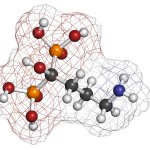
Bisphosphonates are antiresorptive drugs prescribed for a wide range of bone diseases (Paget’s disease of bone, hypercalcaemia of malignancy, osteolytic bone metastases, and osteolytic lesions of multiple myeloma). Bisphosphonate- or Medication-Related OsteoNecrosis of the Jaws (MRONJ) is one of the adverse effects noted with these antiresorptive drugs (ARD).
The main aim of this review was to explore the occurrence rate of MRONJ and to assess the potential risk indicators for MRONJ development after dental extraction in patients treated with ARD.
Methods
Searches were conducted in the Medline, Embase and LILACs databases. Two reviewers screened studies for inclusion. Prospective control trials, cohort studies and case series involving a minimum of 20 patients being treated with ARD were considered. Study quality was assessed using a checklist designed for each study type.
Results were expressed as mean and standard deviation (SD) for quantitative variables and as numbers and proportions for categorical findings. A meta-analysis on the proportion of MRONJ was applied separately for oncologic patients treated IV and for osteoporotic patients treated orally.
Results
- 13 studies (9 case series, 2 cohort, 2 RCTs) were included.
- 5 studies considered IV administration, 3 oral and 5 both.
- 2662 patients underwent dental extractions, 2098 individuals (79%) were treated orally for osteoporosis and 564 (21%) were treated IV for oncological reasons.
- 10 studies reported MRONJ after tooth extractions in patients treated IV. 36 out 564 had MRONJ a risk of; 3.2% (95% CI: 1.7–4.7%).
- 8 studies reported on MRONJ after tooth extractions in patients treated orally. 9 cases out of 2098 were identified a risk of; 0.15% (95% CI: 0.0–0.36%).
- Dental extraction performed with adjusted extraction protocols decreased significantly MRONJ development.
Conclusions
The authors concluded:
The risk of MRONJ after dental extraction in patients treated with ARD exists, especially in patients treated for oncologic reasons. This risk tends to decrease with adjusted extraction protocols.
Comments
Bisphosphonate-related osteonecrosis of the jaw (BONJ) was first recognised on 2003 a information regarding this condition has been increasing since then. This review includes case series, 2 cohort studies and one RCT and provides an estimate of the risk of MRONJ which is higher for IV medication than oral as might be anticipated. However the authors suggest interpreting these findings with caution, as many of the included studies did not include information on other medications or co-morbidities. There are also concerns with the consistency of the definition of MRONJ which need to be taken into consideration.
Links
Primary paper
Gaudin E, Seidel L, Bacevic M, Rompen E, Lambert F. Occurrence and risk indicators of medication-related osteonecrosis of the jaw after dental extraction: a systematic review and meta-analysis. J Clin Periodontol. 2015 Sep 12. doi: 10.1111/jcpe.12455. [Epub ahead of print] Review. PubMed PMID: 26362756.
Other references
Dental Elf -4th May 2015- Bisphosphonate-related osteonecrosis of the jaw treatments
Migliorati CA, Woo SB, Hewson I, Barasch A, Elting LS, Spijkervet FK, Brennan MT; Bisphosphonate Osteonecrosis Section, Oral Care Study Group, Multinational Association of Supportive Care in Cancer (MASCC)/International Society of Oral Oncology (ISOO). A systematic review of bisphosphonate osteonecrosis (BON) in cancer. Support Care Cancer. 2010 Aug;18(8):1099-106. Epub 2010 Apr 22. Review. PubMed PMID: 20411279.
Scottish Dental Clinical Effectiveness Programme SDCEP – Bisphosphonates Guidance

Bisphosphonate-related osteonecrosis of the jaw https://t.co/OUOKXwWrpK
Medication related osteonecrosis of the jaw https://t.co/OUOKXwWrpK
Risk of medication related osteonecrosis of jaw 3.2% in those on IV bisphosphonates https://t.co/OUOKXwWrpK
Medication related osteonecrosis of the jaw- higher in those on IV bisphosphonates https://t.co/OUOKXwWrpK
Risk of medication related osteonecrosis of jaw 0.15% in those on oral bisphosphonates https://t.co/OUOKXwWrpK
Don’t Miss – Medication related osteonecrosis of the jaw https://t.co/OUOKXwWrpK
Dental- medication related osteonecrosis of the jaw
https://t.co/7fPv4BgZUn